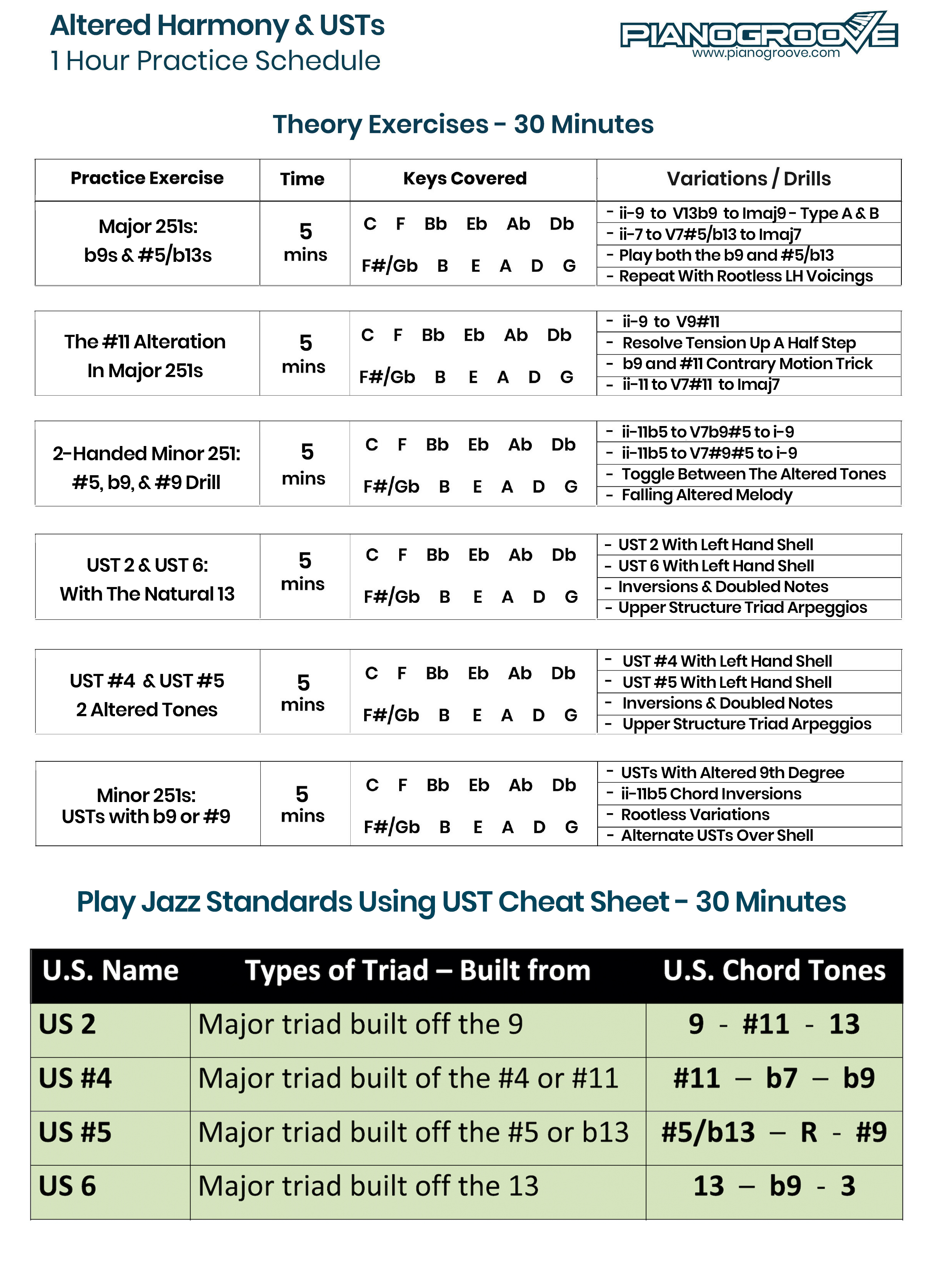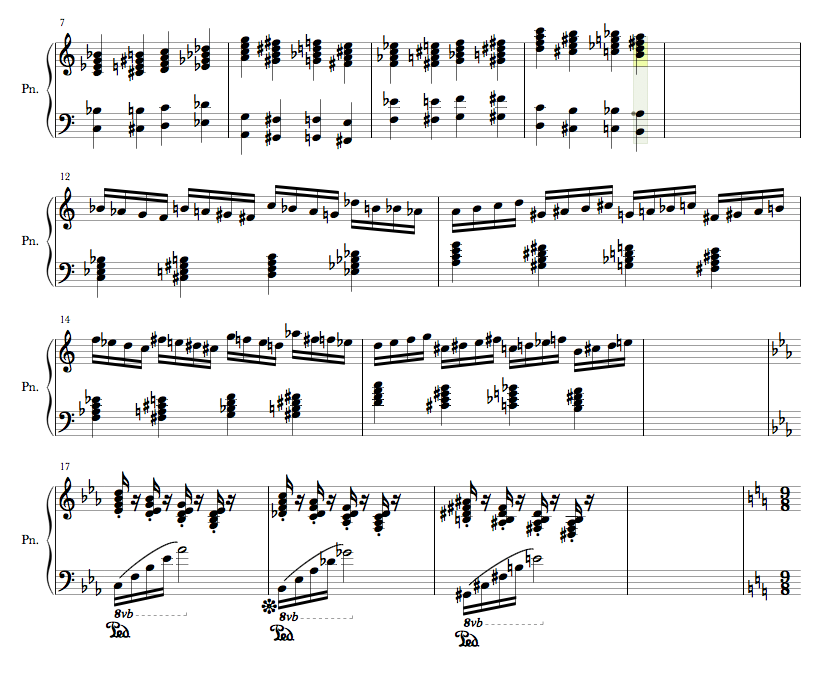Hi! I’ve set myself a goal to learn to be decent at jazz piano in about 5 years. I will try to keep a schedule of 30 minutes on weekdays / 2h on weekends (full time job). I’m gonna be posting my progress here: https://slonopiano.tumblr.com/ Wish me luck! 

5 years is a good amount to see real improvement Manuel.
I posted an answer to a related question here which you may find useful:
Consistency of practice is key, which it seems you already have planned out which is great. Even if it’s just 30 minutes a day, make sure you stick to it and you will notice progression quickly.
Listening is very important, try to spend every moment of the day you can listening to jazz, this could be whilst driving to work, whilst making breakfast, whilst on lunch break etc… any spare moment you have to listen, do it!
Make note of the things you like in the recordings and then come back to them when you are at the piano to study and transcribe them.
You may also find Tuomo’s transcription exercises useful which give us the aural skills we need to learn directly from our favourite recordings.
https://community.pianogroove.com/c/improvisation-exercises
Any questions with any of the material, please don’t hesitate to ask myself or any of the teaching team.
Good luck and… have fun !! 
I’ve been diligently noting what I did in my blog, and today for the first time I went out and looked up some youtube “tutorial” about neo-soul chord progressions, and that’s where I realized how all the drills and chord inversion practice already pays off. I got a bit frustrated yesterday because I felt I didn’t notice any improvement, despite knowing that I have to be very patient. So that was cool. I also tried writing some music, and of course wanted to incorporate some of the piano I learned, but that wasn’t very successful, and I just ended up making the same stuff I usually do. It will come in time I am sure.
Yes learning jazz harmony does take patience Manuel, so stick with it.
To play any type of improvised music, it’s important to master the basics such as scales/intervals/triads/7th chords/251s, so definitely spend the time to work on that material.
Here’s some information to help you get that “Neo-soul” sound you are looking for:
Neo Soul Harmony & Progressions
“Neo-soul” chord progressions are mostly derived from jazz harmony - 251s, 1625s etc… - with occasional non diatonic root movement.
Moving the same voicing shape around the keyboard is very common. And so is “sideslipping” where the same voicing shape is moved up or down by half or whole steps.
Extended Chords in Neo Soul Music
Neo-soul music contains a lot of extended harmony such as 9s, 11s, and 13s. If you haven’t checked out these lessons yet, I think they will be useful for you:
- Major & Minor 9th Chords & Progressions | Practice Drills & Exercises
- 9ths, 11ths, & 13ths Practice Drill | How To Practice Chord Extensions
- 251 Progression Drill with 9ths and 13ths | Extended Chords & Voicings Course
Knowing all open and closed position 9th voicings will get you half way towards that neo soul sound. The exercises/drills above will give you a structured approach to learn them.
Sus Chords, Passing Chords, & Tritone Subs
Sus Chords, Passing Chords, & Tritone Subs would also be useful for you when playing neo soul. These are all devices which we can use to embellish simple 251s; which as mentioned above is often the foundation of neo soul progressions.
Check out this course for theory on sus chords, passing chords, and tritone subs:
Upper Structures For Major & Minor Chords
We have a whole course on upper structure triad voicings. However, an often overlooked area is how this concept can be applied to major and minor voicings too.
Here’s a lesson on “Major & Minor USTs”:
By visualising our chord voicings in 2 parts, it allows us to create big, meaty, polytonal voicings that sound awesome with a Rhodes/electric piano.
We can also manoeuvre and manipulate the ‘structures’ in each hand independently. This can create nice harmonic fills by simply inverting the 7th chords and triads in each hand. Fun stuff to play around with!
It’s important to learn the 251 and 1625 progressions in all 12 keys, and then experiment with the more advanced harmonic concepts outlined above. That way we are building on strong foundations.
Hope this helps and have fun practicing this stuff! 
That’s exactly the drills I’m working on, and I’ll peek at the sus chords / UST lectures, because those come up in the chord progressions I’m picking off youtube. Thanks Hayden you don’t know how valuable these all are (well I hope you know a little bit :).
I have read up a bit on the theory of learning (I am always taking courses in mathematics and computer programming and other topics), and there are two concepts I want to integrate into my music practice. One is interleaving, and Hayden already gave us the split 5 minutes drills. The brain learns best when a concept is new and spicy, and this really only holds for a couple of minutes before the spice disappears. So it’s in fact really important to switch after 5 minutes of a drill, or even 3 or 4, and not 10 minutes. At least that’s how the theory goes. And with theory, the best is to put it into practice. I am now trying to consistently split up my practice in 5 minute intervals. I do however like to spend more time on some concepts, just because I enjoy, so what I’m trying now is if I want to say dig into extended major 2-5-1, instead of playing and learning that for 20 minutes around the whole circle, I will split it into 4x5 minute chunks, and interleave that with 3 other drills. I have only done it for one day, but it already feels like there is something to it.
The other thing which I found useful when learning tidbits of stuff is spaced repetition, where you use a tool to ask yourself a question at regular intervals so that you can remember it. I am not entirely sure how well this fits into my curren tpractice, where really I need to acquire muscle memory, but it might come in handy later to remember tunes and chord progressions.
I like how you said that Manuel, when I do a 2-5-1 in all 12— usually my muscle memory and “out of brain” experience takes over anyway;
so for better understanding I should break it up into groups of 3 and do a short deep exploration of that particular 2-5-1 and then move to different exercise;
Interesting stuff Manuel… thanks for sharing.
I’m a big advocate of small chunks of time dedicated to different practice areas.
I find it takes a lot of discipline to stop and move onto the next area or drill after just 5 minutes. It can be easy to get absorbed in the exercise and loose track of time!
I’m working on the next practice series which is “Altered Harmony & USTs” , here’s how it’s looking… I’ve created some nice exercises/drills which isolate each alteration and the 4 important USTs…
Exactly as you say, the application - or putting it into practice - is vitally important. The first half of this plan drills through the theory, and then the second half is a bit looser where we can apply all of the information to jazz standards using the cheat sheet.
I’ve started making up little exercises for every concept / voicing / technique I want to learn. I have not written them down in a very organized fashion yet but I have been posting them on my blog. I have also started making up little chord progressions and grooves for voicings I want to practice, because it’s just so much more fun.
Another fun game I will do when practicing a voicing, say rootless minor 9th in 2nd inversion (I think that’s the right name for say G - Bb - D - Eb). I will circle out 5 keys I want to get to know better, say Dbm, Abm, Ebm, Gm, Em, set the metronome or make some funky drumbeat, and then instead of going through the circle, I will go from random chord to random chord. Sometimes I’ll not only choose a random chord, but say “up from Eb in 3 whole steps”, so I will play Ebm9 Fm9 Gm9 Am9, or “chromatically down 3 steps from C” and play Cm9, Bm9, Bbm9, Am9. Often those will actually turn into nice little “tunes”, and it makes for nice opportunities to come up with rhythms and comping patterns. This is very easy with some kind of hiphop/soul beat, because parallel 9 chords are one of the main ingredients  I will try to record some of those soon on my blog.
I will try to record some of those soon on my blog.
Do you also come up with your exercises?
Yes that’s a great way to internalise a voicing Manuel.
When I find a voicing I like, I often follow a very similar process.
I’ll take the voicing and move it around chromatically, whole steps, minor thirds, 4ths/5ths… any interval really, but those are the ones i like to play with.
I like to drop this kind of thing into my ballad arrangements to add a bit of spice.
For example, see 2:01s in this performance of “Embraceable You”:
I’m just taking a “So What” voicing, and moving chromatically down (E-11 / Eb-11 / D-11), then a 4th down to A-11, then another half step down to Ab-11 which leads to the tritone sub Db9 of Cmaj9.
Here’s the notation of what I’m playing:
It’s very useful to have this kind of thing ‘under our fingers’ which is exactly what your exercises are doing. So keep them up.
If I ever want to ‘jazz up’ a bar or 2 of static or simple harmony/melody, I’ll often move the same voicing shape around whilst keeping the point of resolution in mind - Cmaj7 in this case.
Here’s the audio of that specific section:
It’s also nice to add little grace notes inside the So What chord:
There I ‘flick’ the 9th in the voicing with my index finger. It’s possibly a little overkill to do it 3 times like that in such close succession, but it’s always an option when moving the same voicing shape around to add some more character.
Thanks for sharing your exercise notation - it’s great to see you experimenting with this stuff and I hope my comments here are constructive. ![]()
Love your organisation and thanks for sharing this exercices and some very interesting link in your tumbl for practicing arpegio wow
I haven’t updated this thread in a while but man I’ve been busy practicing. I am putting in between 2 and 3 h a day and have been shedding voicing and inversions and drop 2 like crazy, and somehow it’s all congealing. I have been doing an excursion into more classical territory, because I love classical and I wNted to get some technique and tensionless playing down. I am now going back a bit more to ear training and playing standards and applying the voicing muscle memory.
I feel like I passed a milestone, and went back to the standards lessons (misty, tenderly, etc…) and they now feel like something “useful” to practice. I am taking the arrangements that Haiden is playing and splitting them up into practiceable pieces, and also memorizing the arrangements. I plan to have a 1h cocktail piano set ready for may 2020, so one year after I started, and I feel that’s an achievable goal!





